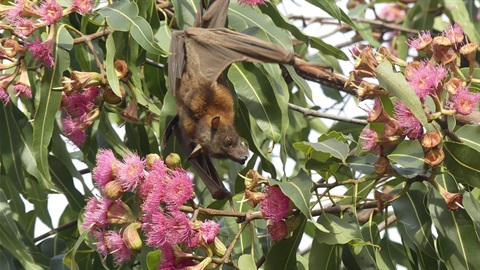Clarence Valley Council assisting residents affected by flying foxes
Published on 04 February 2022

Clarence Valley Council teams are actively working with residents affected by a colony of little red flying foxes which have set up temporary camps in Grafton.
Victoria, Alice and Fitzroy streets are currently the most impacted, with another extensive outpost out at Blaxland Creek.
Director of Environment and Planning Adam Cameron said Council was working closely with residents and the Department of Planning, Industry and Environment DPIE to monitor the camps and find solutions for people living near the flying foxes.
“We understand the flying foxes are unpleasant for residents who live near their camps,” Mr Cameron said.
“If you are an impacted resident, please get in touch with our Natural Resources Management team and we will see how we can assist you.”
Little red flying foxes are a highly mobile and migratory species known for their noisy, smelly and chaotic lifestyle.
Unlike the threatened grey-headed flying foxes, which live in permanent camps in places such as Maclean, little red flying foxes are blossom feeders and move around as their food trees flower.
“Eucalypts such as blackbutts are currently in flower and these are attracting the little red flying foxes to the area, but as the blossoms fade the flying foxes will move on to somewhere else and set up new camps,” Mr Cameron said.
“Despite being unpopular, flying foxes are essential for the health of our native forests, dispersing seeds and pollinating native plants as they move through the landscape.”
Mr Cameron said the pregnant females were almost ready to give birth and were expected to return to roosts in Queensland to give birth soon.
“The breeding season of the grey-headed flying foxes is also underway and will extend until March,” he said.
“We need to consider this threatened population with regards to the management of the little red flying foxes so we minimise disruption to vulnerable species.
“We would also like to remind residents to never touch or approach a flying fox. There is no risk of acquiring the rare but significant infections they can transmit if there is no handling or direct contact between people and flying foxes. Just remember, no touch, no risk.”